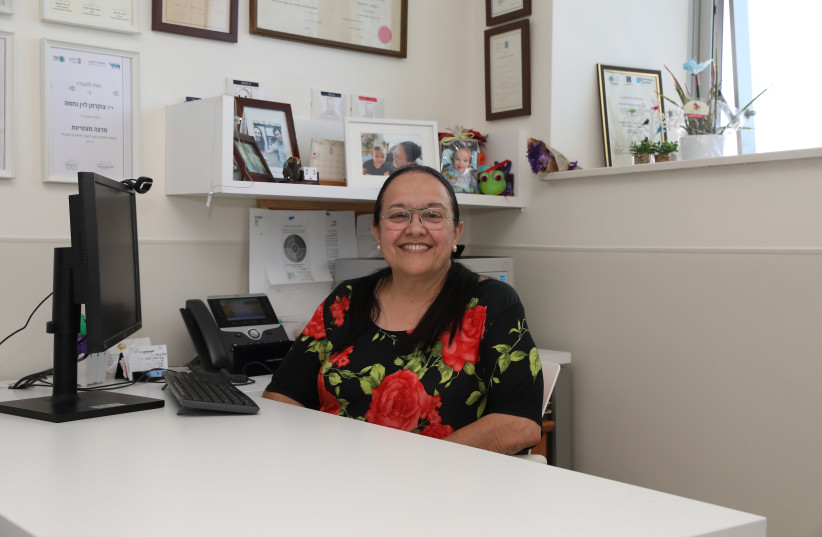A comprehensive national study conducted by Rambam Health Care Campus researchers shows a worrisome increase in type-2 diabetes in children and adolescents and especially major differences between in the Jewish and Arab sectors.
Type-2 diabetes is caused mostly by overweight, lack of exercise and a diet containing too much sugar and other simple carbohydrates. There are some 600,000 Israelis of all ages who have been diagnosed with it, and a large number with pre-diabetes – and the numbers are increasing every year.
The Haifa-based study, which included 14 medical centers from all over the country, compiled data on type-2 diabetes among Israeli children and teens. It was published recently in the journal Pediatric Investigation under the title “Youth-onset type 2 diabetes in Israel: A national cohort.”
The study was led by Dr. Nehama Zuckerman-Levin, director of the clinic for the treatment and research of diabetes in children and adolescents at Rambam’s Ruth Children’s Hospital, and Prof. Naim Shehadeh, director of the endocrinology, diabetes and metabolism and president of the Israel Diabetes Association.
“This is the first time we are surveying a group on such a scale, and we found a higher rate of youngsters with type-2 diabetes even compared to the world.”
Dr. Nehama Zuckerman-Levin

Type-2 diabetes rising worldwide
Type-2 was first diagnosed in children and adolescents in the early 1990s, coinciding with an increase in the obesity epidemic. At a young age, the disease is characterized by the presence of comorbidity (the simultaneous presence of two or more diseases or medical conditions in a patient) – more so than in an adult or young person with autoimmune type-1 diabetes.
The number of cases of youth-onset type-2 diabetes has also increased worldwide, paralleling the rise in pediatric obesity. Its incidence Israel increased significantly from 0.63/100,000 in 2008 to 3.41/100,000 in 2019. significantly and presents a unique profile.
Demographic, clinical and lab data were collected from the medical records of 379 children and adolescents – 228 girls and 151 boys – aged 10 to 18 years, average age 14.7 years – 221 Jews and 158 Arabs), all of whom were diagnosed with type-2 diabetes between the years 2008 and 2019.
During the years examined, a 10-fold increase in the incidence of type 2 diabetes was observed in children and adolescents from the Arab sector (who constituted about 41% of patients, compared with 26% of the total population of children in Israel in those years), while in the Jewish sector there was a 3.5-fold rise.
According to Zuckerman-Levin, the clinical picture that emerged from the study was similar to cases in the world literature, but in contrast to findings in adults with diabetes from the Arab sector, children presented a different picture: “In any case, this is a somewhat unusual finding, the reason for which is probably mainly genetic. In any case, there is no doubt that the general increase found among children is related to a change in lifestyles in recent years and to more and more populations leading less-healthful lifestyles.”
Other findings from the national study were a lower rate of metabolic syndrome – a combination of diabetes, high blood pressure and obesity that raises the risk of getting coronary heart disease, stroke and other conditions that affect the blood vessels – a higher rate of fatty liver and psychosocial problems among Israeli children, compared with what is described in the medical literature among child populations in the Western world. In addition, the researchers identified microvascular complications (long-term conditions involving the eyes, kidneys and nerves that affect small blood vessels) in the group of children who had already participated in the study – both when they were first diagnosed and during the follow-up years, when this rate increased.
“This is the first time we are surveying a group on such a scale, and we found a higher rate of youngsters with type-2 diabetes even compared to the world,” noted Zuckerman-Levin. “Based on the research data, it is necessary to prepare accordingly at the national level with the aim of reducing the onset of the disease and bringing about the early detection of those who may suffer from it.”
“There is no doubt that these alarming findings require educational and preventive intervention from an early age in order to stop this dangerous trend," added Shehadeh. "Plans to achieve this goal are being implemented in various settings in the country.”
